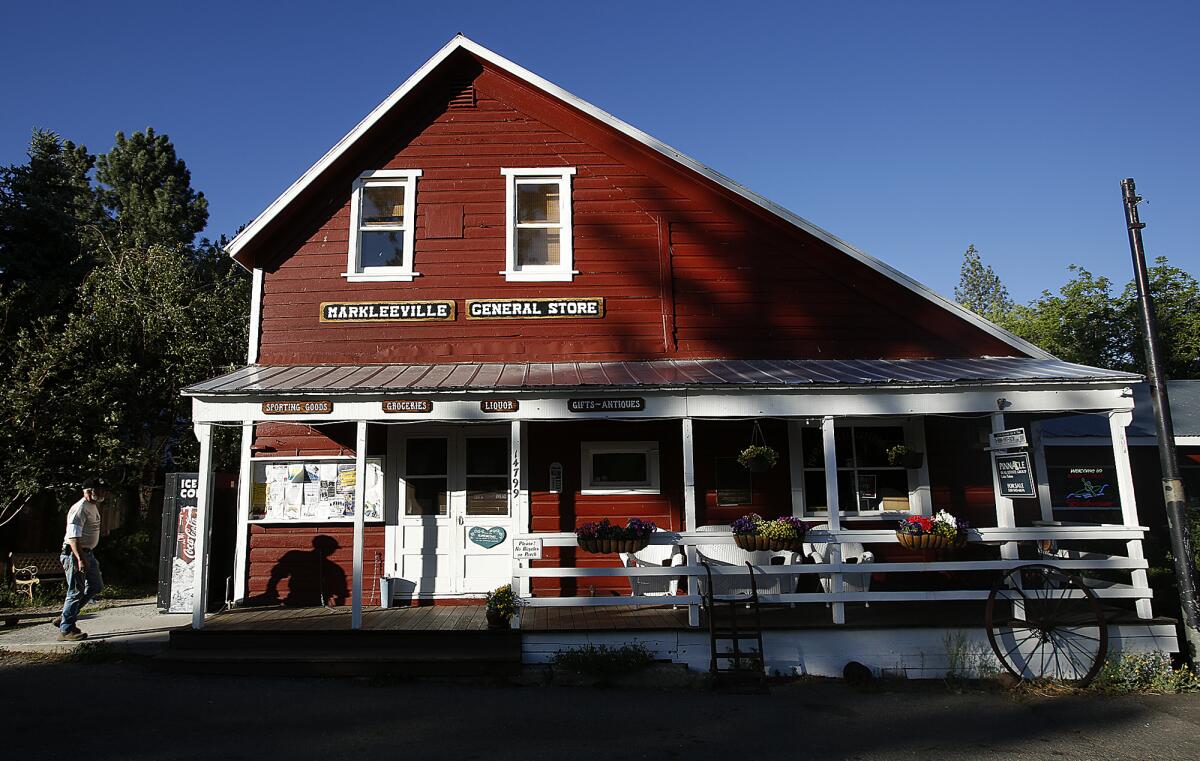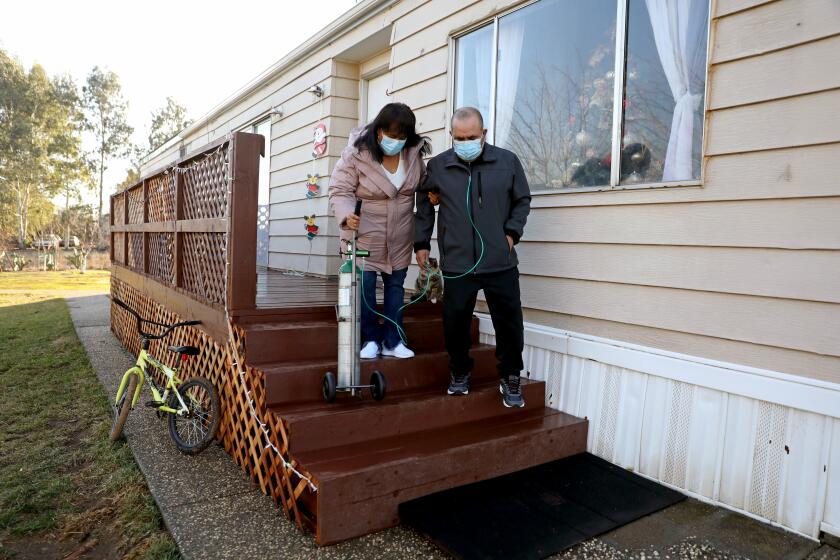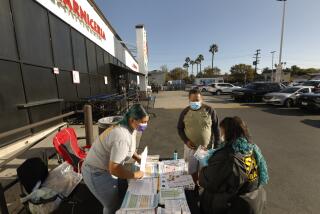18 months into pandemic, a rural California county records its first COVID-19 death

- Share via
Alpine County, sparsely populated and tucked into the Sierra Nevada, has no hospitals, no ventilators and no ICU beds. Until last week, California’s least-populous county also had no COVID-19-related deaths.
But that changed Tuesday when the county, California’s smallest, reported its first death attributed to the novel coronavirus, which has now infected more than 4.7 million Californians and killed 69,000 statewide.
The individual was fully vaccinated, older than 65 and “seriously immunocompromised,” according to officials from the Alpine County health department, who are not releasing additional information about the case because of privacy concerns.
Of Alpine County’s 1,100 residents, 69.5% are fully vaccinated, according to The Times’ coronavirus tracker. It has the highest vaccination rate of any California county outside the San Francisco Bay Area. As of Thursday, the vaccination rate statewide is 66.6%.
Nichole Williamson, the county’s health and human services director, attributes Alpine’s success in combatting the worst outcomes of COVID-19 to the high vaccination rate as well as “the willingness of our residents to follow the mandates.”
Alpine is a blue oasis in red country California. Four out of five of Alpine’s neighbors — El Dorado, Calaveras, Amador and Tuolumne counties — voted in favor of the recall of Gov. Gavin Newsom and to reelect Donald Trump in the 2020 presidential election, according to data from the secretary of state’s website, and each has a lower vaccination rate.
Plus, Williamson said, “We are fairly isolated.”
Alpine recorded its first coronavirus infection in March 2020, shortly after Newsom’s shelter-in-place order. But it didn’t record its second infection until July 13 and its third until Oct. 3. None of those resulted in community spread, Williamson said, and it wasn’t until Oct. 29 that the county recorded its first outbreak, bringing the total number of infections countywide to eight.
It took until Sept. 10 of this year for the county to reach its 100th confirmed case.
“COVID was a big concern of ours,” said Rachel DeForest, executive director of the Alpine County Chamber of Commerce, noting the large number of seniors and retirees in the community. “As much as we were fearful of what it was going to do to our tourism economy, we were also fearful of what it would do to our residents, many of them who have lived here all of their lives.”
It was the nature of Alpine’s economy that pushed business owners and residents to follow public health orders and adopt vaccines early, said Aaron Johnson, general manager of Bear Valley Adventure Co. He noted that tourists flock seasonally from the Bay Area and Central Valley to Alpine’s outdoor recreation areas.
“Since we knew that the tourists were coming at us, we really put up a lot of protections around us and adhered to them throughout the pandemic,” Johnson said. “We really had to stick to our guns.”
In rural California, a family thought COVID would never reach them. When it did, it was devastating.
Residents and business leaders also credit strong public health leadership for helping the county stave off a COVID-19 death for 18 months.
In lieu of traditional news releases — there are no major news organizations in Alpine County — Public Health Officer Dr. Rick Johnson sent out weekly, and sometimes daily, emails directly to residents, updating them on the state of the virus, according to Williamson. “Dr. Johnson tried really hard to get out in front of vaccine myths and dispel them,” she said.
The small size of the community allowed Johnson, who was away on vacation when contacted by The Times, to have one-on-one conversations with residents.
“He had an open-door policy,” DeForest said. “You could call his office directly and leave a message for him and usually get a call back from him within 24 hours.”
Despite Alpine County’s relative success in fighting COVID-19, local business owners, many of whom rely on spring and summer tourism for their livelihoods, are struggling after shutdowns during the high season two years in a row.
Last year, COVID-19 forced Alpine’s lodges, bars and restaurants to close their doors. This year proved even more challenging, DeForest said.
The chamber’s biggest tourist event of the year — a 103-mile bike ride through the county’s steep mountain passes — was scheduled for July 17.
“On July 16, the Tamarack forest fire came through our town and wiped out many of our recreation facilities,” DeForest said, forcing the cancellation of the ride. “For about six weeks, we didn’t even have power to run our credit card machines.”
In the wake of Alpine County’s first COVID-19-related death, health officials are urging residents to get vaccinated.
Public Health Program Manager Tim Streeper remains “cautiously optimistic” about the county’s success, “but not overconfident, as COVID-19 remains a serious threat to the health of our community.”
Despite the fatality, he said, “things do not appear to be getting worse in Alpine County.”
One hundred miles to the north, Sierra is now the last remaining California county to report zero COVID-19 deaths.
More to Read
Sign up for Essential California
The most important California stories and recommendations in your inbox every morning.
You may occasionally receive promotional content from the Los Angeles Times.












